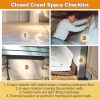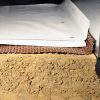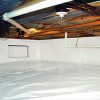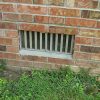You can read a lot about air cleaners. They do remove some of the particulate air pollution in your home, but their value is limited.
Think about it.
The tiny particles of dust, soot, pollen, spores, dander, etc. in your home are not generally floating around in the air. They only do so when they are stirred up. Possibly by a cat at play, a pillow fight, or wind whipping through an open window. Smoke particles are an exception. They are in the air if you allow a smoker to smoke in your home.
So with the exception of smoke particles, how can one expect an air cleaner — either a room-size unit or a whole-house unit installed near your furnace — to clean the air in your home. The former only handles one room and the latter is only effective when the furnace is running. While they will pick up some particles — filters do get dirty after all — they only make a small impact on the quality of the air in your home.
Nor are air cleaners inexpensive. For every room-size air cleaner you operate, expect to spend about $120 per year on electricity and filters. For a whole-house air cleaner, expect to pay about $1500 to have one installed. In addition, filter costs can run as high as $100 each and typically need to be changed annually.
Getting to the Source
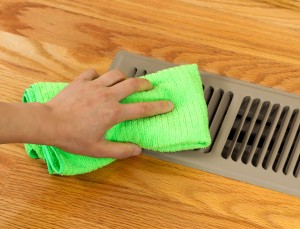
Dirty air can literally be sucked into your home. As heated or cooled air blows into a room, a vacuum is created around the register. If the joint between the duct and flooring is not well sealed, the rush of air will siphon dust and mold spores from floor and wall cavities, and from the crawlspace or the basement.
The most effective and least costly way to reduce indoor air pollutants in your home is to not let them inside or, if you have not choice, to limit their spread.
- Make your home a no-smoking zone. Avoid having pets or limit their access to a few rooms in the house. They both track pollutants in and produce dander.
- Close windows when pollen counts are high. Open them when counts are low, weather permitting.
- Ask family and visitors to remove their shoes upon entering the home. Many pollutants are simply tracked in, including pesticides. At the very least, have fiber door mats at every entrance to the home and at the bottom of the basement stairs. Install secondary mats for shoe wiping inside the door.
- Minimize the use of candles and fireplaces, and do not use unvented gas- or kerosene-fueled appliances indoors.
- Keep garage doors closed and well sealed with weather stripping. Attached garages harbor pollutants, including automobile exhaust, gasoline containers, pesticides, and fertilizers.
- Control mold by keeping your home’s relative humidity levels at 60 percent or less. Mold stops producing mold spores when the air is dry. You can buy a hygrometer at the local home center or online to monitor humidity levels.
- Don’t ignore basements and crawlspaces. If the air quality is poor in either of these places, it will affect the rest of your home because much of it finds its way into the rooms upstairs. (If you don’t believe this, take a can of spray paint and give it a short blast and see how long it takes before you smell it upstairs.) Pollutants from below-grade spaces include VOCs from open or poorly sealed containers of solvents and paints, and mold spores generated by excessive moisture.
- Air seal gaps and opening throughout your home, beginning with those that connect the attic to your living spaces. Even small openings, such as around a recessed light or around an electrical switch, can allow warm air to rise to the attic and be vented to the outside. As air rises and escapes in the upper levels of your home, it sucks in replacement air from lower levels, including basements and crawlspaces. With it comes all sorts of pollutants, including dust, mold spores, and VOCs. As a bonus, air sealing will make your home more comfortable, reduce the need for humidification in winter, and lower your heating and cooling bills. My Home Science includes a number of articles about how to air seal your home. Or check out these videos from Dr. Energy Saver.
- Clean regularly. A vacuum with a high-performance filter is a good investment. Low-quality vacuum filters allow tiny particles back into the room as you clean. Dust frequently with a cloth dampened with a 50-50 solution of vinegar and water. Launder sheets and bedding regularly. Use green cleansers, including plant-based dishwashing detergents and floor cleaners. Make vinegar your primary cleaner.
- Minimize unnecessary dust-collecting surfaces. Wall-to-wall carpeting, drapery, upholstered furniture, open shelving all harbor more dust than easy-to-clean surfaces like wood floors, blinds, leather furniture and cabinets.
If you can’t do all of the above for the entire house, do it for one or two rooms. Doron Schneider, MD, author of Indoor Air Matters, a white paper on the connection between indoor air quality and health, suggests creating at least one “sanctuary” room in the house. “The master bedroom is a good candidate,” he says. “Pets should be kept out and the room should be as clutter-free as possible, and have bare hardwood floors and no unnecessary surfaces that can collect dust.”


